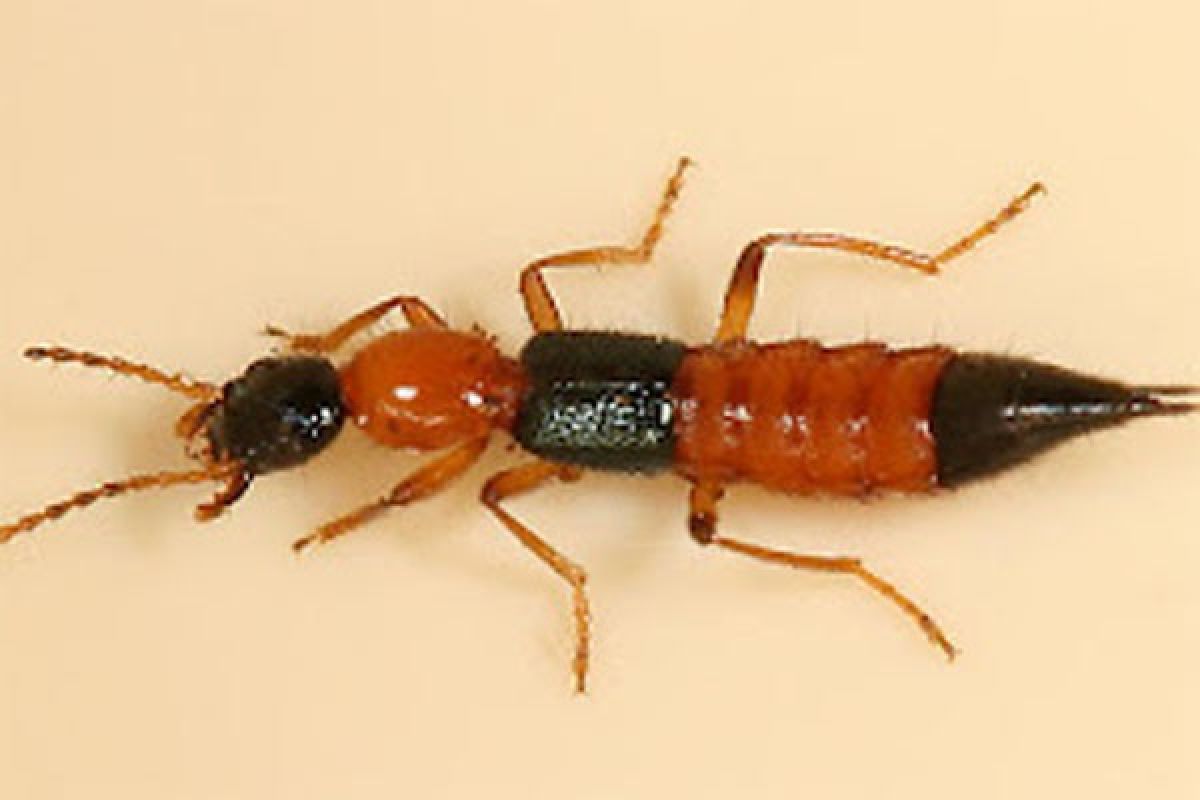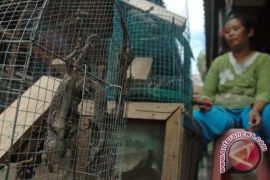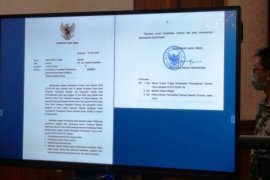So far, however, no victims with serious infections have been reported in other provinces in Java. But the presence of this poisonous insect, locally called tomcat, in certain places in Central Java, Yogyakarta, West Java, Jakarta and Banten has caused fear among residents.
"Actually, we have already been living with tomcats in the agricultural areas. The problem is that the tomcats are breaking out and attacking residents in East Java and the insects, whose bodily fluids cause skin irritation, have entered the urban areas," said Widayanto, head of the health service of Purwokerto, Central Java.
Residents are afraid of the insects as the outbreak in East Java has affected hundreds of victims. At least 12 districts in East Java have been attacked by rove beetles.
"We have recorded 12 districts and cities that have been attacked by this creature; Surabaya, Pasuruan, Banyuwangi, Probolinggo, Jember, Sampang and other regions in East Java," Head of East Java Health Service Budi Rayahyu said.
He pointed out that his office had received reports of 559 victims, of whom 379 came from East Java provincial capital Surabaya, 150 from Sidoarjo and 51 from Gresik.
In Surabaya alone, around 103 people have been treated at health care centers, after being bitten by the `tomcat` insects. "All those affected have been declared outpatients," the head of the Surabaya health service, Esty Martiana Rachmie, said.
Esty noted that most people do not know what to do when they are bitten by tomcats. "They usually hit the insect causing it to excrete a poisonous fluid that causes burns and blisters on the skin," she said.
Budi Rahayu, however, called on the people not to panic by the attack of the animals. He said that residents became paranoid upon hearing about the spread of rove beetles. "Moreover, some have reported that the toxin emitted by the insects is more poisonous than that of cobra snakes. This is not true," Budi explained.
What the people need to know is how to handle the situation and overcome it if the insects attack. After all, the outbreak of rove beetles in East Java has also reached other provinces such as Central Java, West Java, Banten, Jakarta, and even in Sumatra.
"We have received a report that two residents have been bitten by rove beetles," Dr. Mafilindati Nuraini, Head of the Sleman Health Office on Thursday. She pointed out that the two locals were residents of Gamping subdistrict.
The two locals were reported to have suffered from skin irritation as a result of beetle bites. "We are now doing our best to identify the [nature of] attack.
If any irritation is evident, it indeed looks like [a case of] beetle bites," she added. The health official appealed to the public to refrain from panicking over the attacks by the poisonous insects.
She explained that her office would soon be coordinating with the agriculture service in an effort to prevent an escalation in the beetle attacks.
Therefore, her colleague health service chief Widayanto in Purwokerto, said his office will launch campaigns on how people can keep their environment clean, especially in the resettlement areas.
"Tomcats exist around us. Farmers are already accustomed to their presence," Widayanto added.
It was also reported that in West Java, particularly in the district town of Sukabumi, residents spotted the animals in Sriwedari village, Gunung Puyuh subdistrict.
"I found the insect creeping inside my commode," Lilis Krisnawati, a resident told reporters. Fortunately, Lilis was able to catch it and put it into a jar.
The insect is now under the investigation of agriculture and land affairs service office. Kardina Karsoedi, head of the agriculture service said based on physical observation, the insect is a rove beetle but it has still to be examined in the laboratory.
In another West Java town of Bekasi, which is a buffer town of Jakarta, residents in an apartment housing complex in Jalan Raya Baru, called on related institutions to help eliminate the insect that has claimed victims in the past.
"At least 60 people were bitten and infected by tomcats in November 2011," Susi (29), a resident of the housing complex said. Susi`s son, Kevin (3), was also stung and the scar can still be seen.
Meanwhile, residents of Ciater village, Serpong subdistrict, South Tengerang (Tangsel) in Banten province, are also panicking due to a report of the presence of the insect.
"Residents have reported that one of them has been stung by a rove beetle," Dadang M Epid, head of Tangsel`s Health Service said.
He explained that because the victim had not yet been given medical treatment, the health care center in the village had been ordered to take care of the victim, known as C.
In Jakarta, an employee named Rivai was quoted by the Detik.Com online media as having spotted a rove beetle when he worked over time on Friday morning. He found the insect near the window of his office in South Jakarta.
In Sumatra, locals also claimed to have spotted the poisonous insects in Riau province. Residents of a settlement in Jalan Garuda Sakti, Tampan subdistrict, were restless upon hearing the presence of tomcats there.
"I did not believe it initially but when I spotted one myself, I was convinced that rove beetles do exist in this settlement,"
Firma Licardo, a local said, adding that he spotted the insect on Thursday.
In Riu`s neighboring province of Jambi, the insects have been known by locals as predators of plant hoppers and believe that they help safeguard their rice fields from the pests.
Harlik, head of Jambi`s agricultural service said rove beetles have been found in Jambi. "They are usually found in rice fields or in other agricultural fields. But their number is usually small, not as large as that in East Java," Harlik added. (*)
(T.A014/a/INE/a014)
Reporter: Andi Abdussalam
Editor: Fardah Assegaf
Copyright © ANTARA 2012










